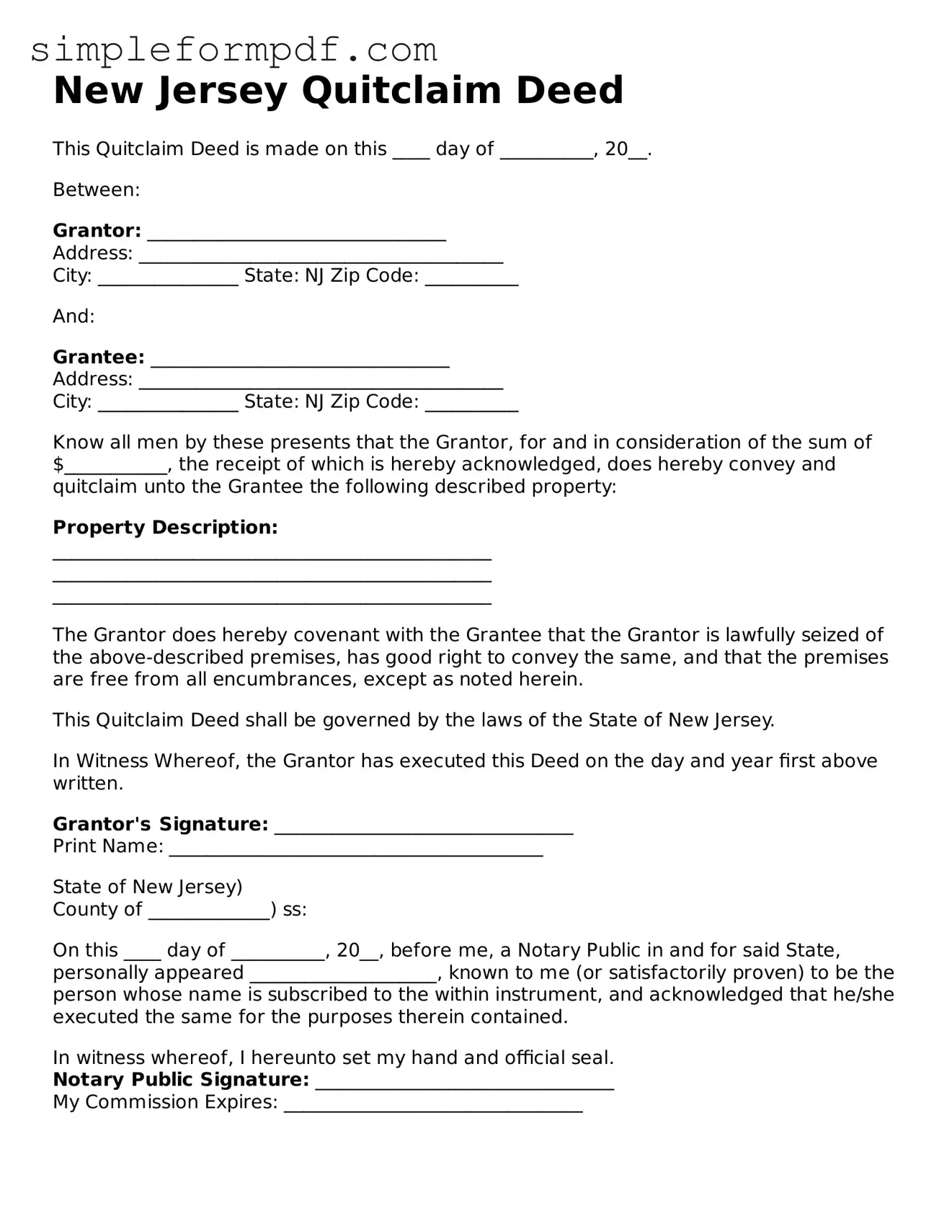New Jersey Quitclaim Deed
This Quitclaim Deed is made on this ____ day of __________, 20__.
Between:
Grantor: ________________________________
Address: _______________________________________
City: _______________ State: NJ Zip Code: __________
And:
Grantee: ________________________________
Address: _______________________________________
City: _______________ State: NJ Zip Code: __________
Know all men by these presents that the Grantor, for and in consideration of the sum of $___________, the receipt of which is hereby acknowledged, does hereby convey and quitclaim unto the Grantee the following described property:
Property Description:
_______________________________________________
_______________________________________________
_______________________________________________
The Grantor does hereby covenant with the Grantee that the Grantor is lawfully seized of the above-described premises, has good right to convey the same, and that the premises are free from all encumbrances, except as noted herein.
This Quitclaim Deed shall be governed by the laws of the State of New Jersey.
In Witness Whereof, the Grantor has executed this Deed on the day and year first above written.
Grantor's Signature: ________________________________
Print Name: ________________________________________
State of New Jersey)
County of _____________) ss:
On this ____ day of __________, 20__, before me, a Notary Public in and for said State, personally appeared ____________________, known to me (or satisfactorily proven) to be the person whose name is subscribed to the within instrument, and acknowledged that he/she executed the same for the purposes therein contained.
In witness whereof, I hereunto set my hand and official seal.
Notary Public Signature: ________________________________
My Commission Expires: ________________________________
